Lexus Check Engine Light Stays On
Have problems with the Check Engine Light on your Lexus? Know what is causing the light to turn on and learn possible solutions to fix the check engine light problem.
If there are engine or emission-related problems, a yellow check engine or “service engine soon” light will illuminate your dashboard. In some cases, the message could be due to the cruise control, TRAC Off, or a VSC light, even though there may be no issues with these systems.
What Does Lexus Check Engine Light Mean?
Lexus check engine light means that the On-Board Diagnostic (OBD) system has detected a problem.
This could be as simple as a loose gas cap or a more severe problem like a bad VVT solenoid, spark plugs, catalytic converter, or transmission issues.
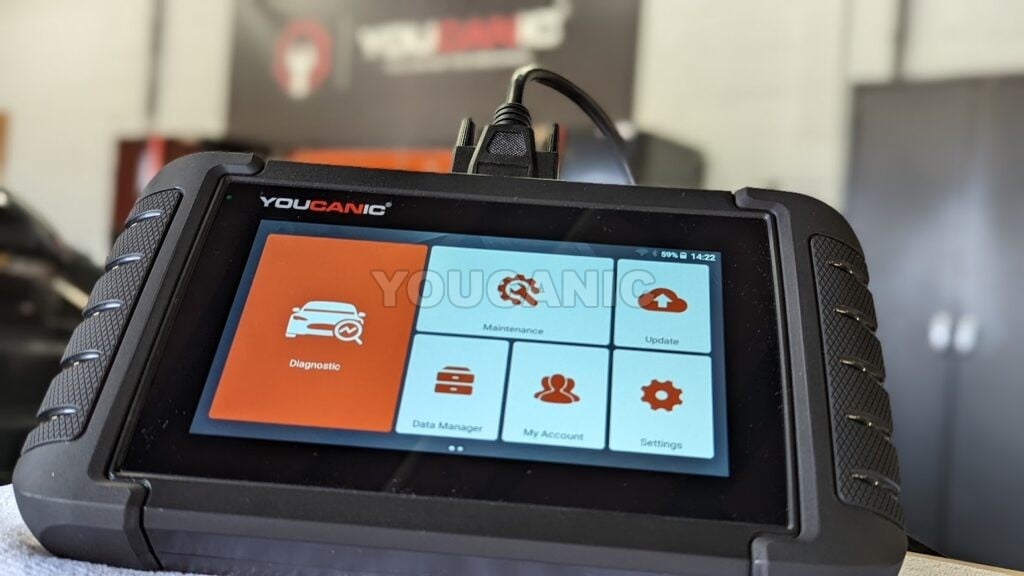
A fault code will be stored in the OBD computer and easily read with an OBD2 scanner, like the YOUCANIC Full System Scanner. The fault code explains why your Lexus check engine light is on.
Symptoms
Common symptoms that you will notice when the Lexus check engine light stays on include:
- rough idling
- poor acceleration
- engine not starting
- engine shakes at idle
- rough shifting
- TRAC OFF, VSC light on
You also might notice that the car is misfiring or overheating. However, sometimes, there are no symptoms at all.
If your Lexus seems to be running fine, but the check engine light still comes on, don’t brush it off. Please make sure you get it checked as soon as possible.
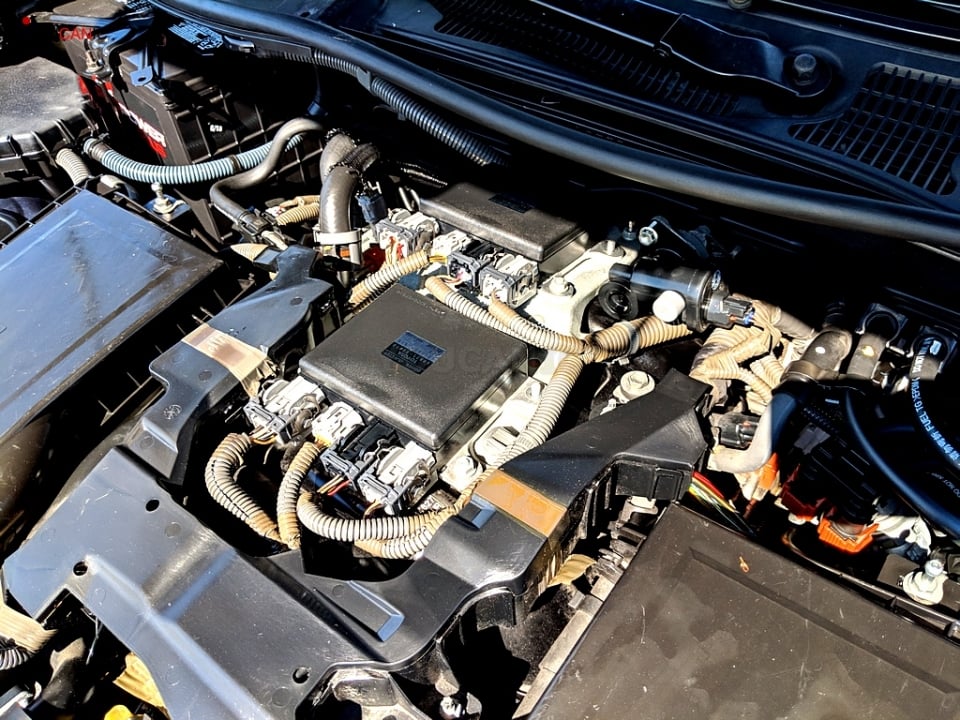
What to do when Lexus’s check engine light comes on?
When your Lexus check engine light comes on, we recommend checking a few basic items before continuing your journey. Do not continue to drive if the check engine light is flashing.
- Check the gas cap. If the gas cap is loose, tighten it until you hear it click. Once you tighten the gas cap, resetting the engine light can take up to one week. Or use an OBD2 scanner to reset it yourself.

- Check engine oil level. Turn off the engine. Wait for at least fifteen minutes. Open the hood. Pull out the dipstick and wipe it clean. Reinsert it and remove it to read the engine oil level. The level should be between the MIN and MAX marks.

- Allow the engine to cool down, and check the engine coolant level.

- Monitor warning lights and engine temperature. Do not continue to drive if the check engine light is flashing, the engine is overheating, or the oil light turns on.

- Read Lexus engine fault codes using an OBD2 scanner as soon as possible. See the instructions below.

What problem triggers Lexus Check Engine Light?
The most common problems that trigger the check engine light on a Lexus are worn spark plugs, bad oxygen sensors, and a loose gas cap.
Common causes for Lexus check engine light to be triggered are:
1. Spark Plugs
A spark plug that no longer fires is one of the most common problems that trigger the check engine light on Lexus vehicles.
Many owners don’t realize that spark plugs are wear-and-tear items and need to be replaced according to the owner’s manual recommendation. Typically 60,000 miles.
On older Lexus vehicles equipped with copper spark plugs, you had to change them every 30,000 miles. Newer models have Platinum or Iridium spark plugs lasting over 100,000 miles.
2. Ignition Coils
Ignition coils are in charge of generating electricity for the spark plugs. Older Lexuses only have one ignition pack, while newer cars have one ignition coil per cylinder.
If something is wrong with the ignition coils, it will trigger the check engine light and codes such as P0300, P0301, P0302, P0303, and P0304.
Remember, if you have a diesel Lexus, such as LX450 V8 diesel, it doesn’t have ignition coils, so this won’t be the problem.
3. VVT System Malfunction
Most Lexus engines have variable intake manifolds, which are more complicated. This added complexity makes them more prone to intake leaks, resulting in a lean running engine.
You will usually experience symptoms like rough idle, lack of power, or hesitation on accelerations. Such behavior can also be caused by a dirty MAF sensor, giving false air quantity readings.
Clean the MAF sensor if in doubt, but use only the MAF cleaner fluid. Codes: P0171 and P0174. The Variable Valve Timing (VVT) sensor varies the oil pressure, which changes the valve lift’s timing. The cams will either advance or retarded the timing depending on engine speed and load.
Different factors could cause the VVT system to malfunction, like a defective Oil Control Valve (OCV) solenoid, dirty or low engine oil, a problem with the valve timing, or a problem with the VVT controller assembly.
If you have VVT problems, you may get fault codes such as P1354, P1349, and P1351. Also, the engine will idle rough and feel underpowered. Possible solutions will be to clean the VVT valves, replace the cam sensors, and replace the OCV solenoid.
4. Loose Gas Cap
Another reason the Lexus check engine light comes on is a loose gas cap.
The gas cap is a key part of your car’s fuel delivery system, so if it’s not tightened properly, it could lead to gasoline fuels leaving the tank.
If the light turns on immediately after filling up your tank, this is a good place to check first.
Sometimes, it just needs to be tightened a little bit more.
5. Catalytic Converter
One that is particularly common on Lexus vehicles is the converter under-heating. A lot of people who have Lexus vehicles have reported this issue.
They found the converter was working fine, but the sensor didn’t think it was. So that’s something specific to watch out for. Catalytic converters can also clog up if the car has over 150,000 miles.
6. Oxygen Sensor
If you have a high-mileage Lexus, it is very likely to have a check engine light caused by an emission-control-related issue.
Although stored codes usually point to a catalytic converter with low efficiency, you can easily have a faulty downstream o2 sensor. Rule this out before changing a much more expensive catalytic converter. Code: P0420 (Catalyst Efficiency Below Threshold)
Oxygen sensors (O2) may trigger a check engine light to come on. A common fault code triggered by a bad Lexus oxygen sensor is P1150, P1133, and P1153 related to the sensor, which means the circuit for the heater element of the O2 sensor is defective.
To fix this problem, you will need to replace the oxygen sensor. Changing a Lexus O2 sensor is simple as long as it is one of the oxygen sensors that is easy to access.
7. Idle air control valve
Older Lexus cars with a cable-operated throttle can suffer from rough idle and hesitation when accelerating from idle.
The problem usually lies within the idle air control valve, blocked by dirt, oil, or carbon build-up. Use This carb-cleaner to remove the build-up.
Code P0505
8. EVAP System
If you are getting codes related to the EVAP system, check if the hose connected to the solenoid mounted on the engine intake isn’t broken.
Other usual causes are a bad fuel cap, leaking purge valve, damaged EVAP canister, or cracked lines.
Codes P0441 and P0445.
9. Camshaft Position Sensor
It is not unusual for a camshaft position sensor to fail. This usually manifests with hard starting, stalling, and constant or intermittent rough running.
Luckily, the camshaft position sensor is quite easy to replace in most models.
Code: P0340.
10. Oil Sludge
Oil sludging is a serious problem that affects most cars made in the 2000s. A blocked crankcase ventilation valve, a PCV valve, causes this.
This can cause problems ranging from high oil consumption, rough idle or a check engine light, and even a complete failure at highway speeds.
Visible symptoms are blue smoke on startup or acceleration and yellow gunk on the oil filler cap.
You could also get emission control-related codes, such as P0420.
How to Reset Lexus Check Engine Light
This section shows you how to read and clear Lexus check engine fault codes (also known as Diagnostic Trouble Codes or DTC) using an OBD2 scanner. We do not recommend clearing codes without fixing existing problems.
- Locate the OBD2 port under the dashboard—plugin your OBD2 scanner.

- Turn on the ignition but do not start the engine.

- Allow your OBD2 scanner to turn on and communicate with your Lexus.
- Select Read Codes from the main menu.
For example, fault codes will be displayed on the OBD2 scanner, such as P0300. Write down all the codes and further research to understand their meaning and learn about possible causes. After the problem has been resolved, you’ll need to reset the Lexus checked engine light by going to the Clear Codes menu.
Fault codes are only the starting point. While they often give you an excellent idea of what is wrong, we recommend having a professional car mechanic properly diagnose the check engine light before replacing any parts.
Lexus Check Engine Light Flashing On and Off
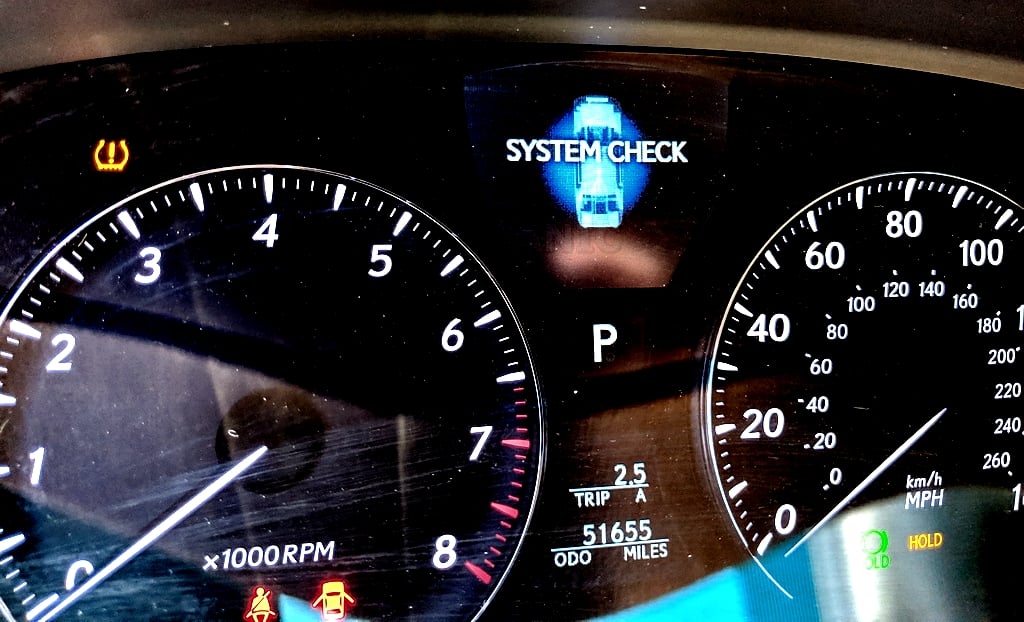
Lexus check engine light will flash if one or more cylinders are malfunctioning. This could be caused due to bad spark plugs, a defective fuel injector, a mass airflow sensor, a blown head gasket, a fuel issue, and a clogged catalytic converter. Flashing the Lexus check engine light means an engine misfire, a serious issue that must be addressed immediately.
Please think of the flashing light as a warning sign that you must figure out the cause immediately and fix it. Do not drive your Lexus if the check engine light is flashing, or you will cause damage to the engine and catalytic converter.
Check Engine, VSC, Trac Off Warning Lights On
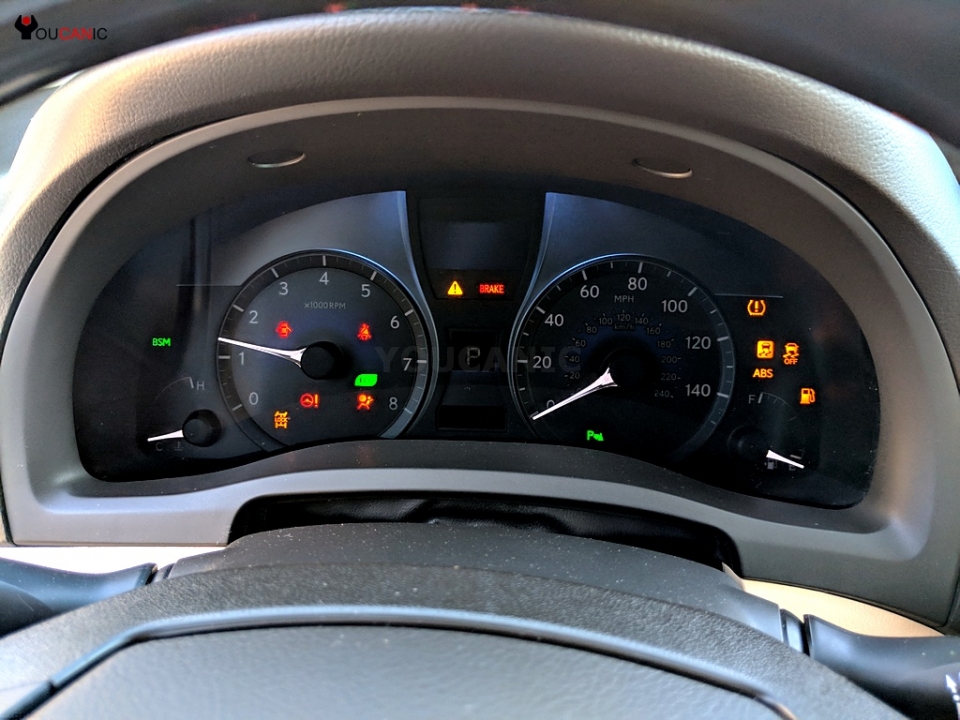
Check Engine, VSC and Traction lights stay on after starting a Lexus; you should tighten the gas cap first.
A loose gas cap or a damaged gas cap seal often causes those lights to come on simultaneously. If tightening or replacing the gas cap does not fix the problem, use an OBD2 scanner to read the codes.
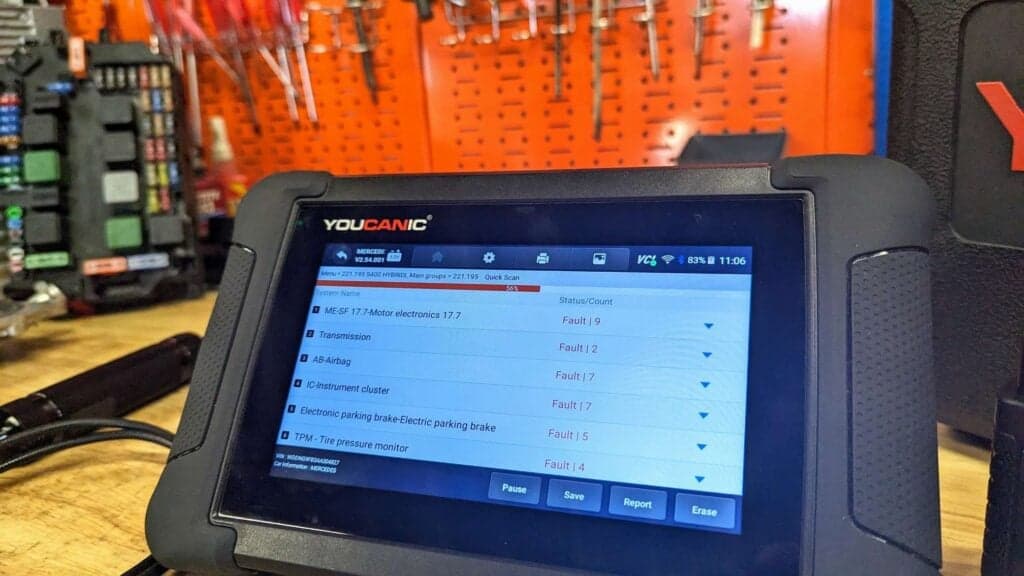
One good example of an OBD-II scanner is the YOUCANIC Full System Scanner. It can read and clear codes from all the systems in your Mercedes-Benz. It can also perform various tasks, like bi-directional tests, maintenance and repair reset functions, and many more.
Should I keep driving if my Lexus check engine light comes on?
As the check engine light will not tell much, deciding whether to continue your trip might seem difficult.
Observe how your car behaves, and look for symptoms such as:
- Rough running
- Engine misfire or juddering
- Lack of power
- Poor throttle response
- Unusual sounds
- Smoke from the exhaust
- Overheating
Any of these symptoms indicate that the engine in your Lexus is not performing as it should. Start looking for a safe place to stop, as driving like this could easily cause irreversible engine damage.
Do not drive the vehicle if you notice performance issues, overheating, or engine shaking. Driving your Lexus with these systems can cause expensive engine problems.
Frequently Asked Questions
How serious is a Lexus check engine light?
Some people may drive miles and miles with the check engine light on; however, that’s not a good idea.
Although your Lexus check engine light can be triggered by something as simple as a loose gas cap, it can also indicate a more dangerous engine problem, emissions, and transmission problem. It’s important to take the time to find out what’s going on. It’s important to take the time to find out what’s going on.
How is the Lexus check engine light diagnosis?
You’ll need to read the codes with an OBD2 scanner or take the vehicle to a professional, who will hook up a diagnostic tool to read what has been detected. The tool will give a reading of one or several different codes that could be a possible issue.
How often does the check engine light come on?
Lexus vehicles are designed to be above average in performance and durability. However, that doesn’t mean that they will never have any issues. The check engine light could come on at any time, and there is no telling how often it could happen. But if you take regular care of your car and get routine checkups, it should help keep it functioning properly and reduce the risk of the light being triggered.
Can I still drive my car if the check engine light is on? to get
The answer to that question is maybe. A faulty sensor may trigger the light, which means nothing is wrong with your car. Or a bigger, more serious issue could trigger it. The problem is that it’s hard to tell which one it is without a professional diagnostic scanner. To protect your safety and the safety of others on the road, it’s best to get the vehicle checked as soon as possible and avoid driving while the light is on.
Conclusion
The Lexus check engine light has a myriad of different causes and meanings. When the CEL comes on, Lexus cars and SUVs trigger other warning lights such as VSC, Traction Control, and other warning lights. We recommend addressing the check engine light first, which will often reset the other warning light.
As with any car, it could indicate a severe problem or be a faulty sensor. Either way, you must get your vehicle diagnosed as soon as possible to see what the issue is.
Hopefully, after reading this article, you will feel more comfortable understanding why your check engine light is on and what to do about it.
This guide taught you about common problems that cause the Lexus check engine light to come on. You will also learn how to read Lexus Diagnostic Trouble Codes (DTC) yourself using an OBD2 scanner. This guide applies to all 1996 and newer Lexus vehicles, including ES, LS, SC, and RX models.
We hope you find the Lexus Check Engine Light Stays On guide helpful. Check these troubleshooting and repair guides for more help on your Lexus.



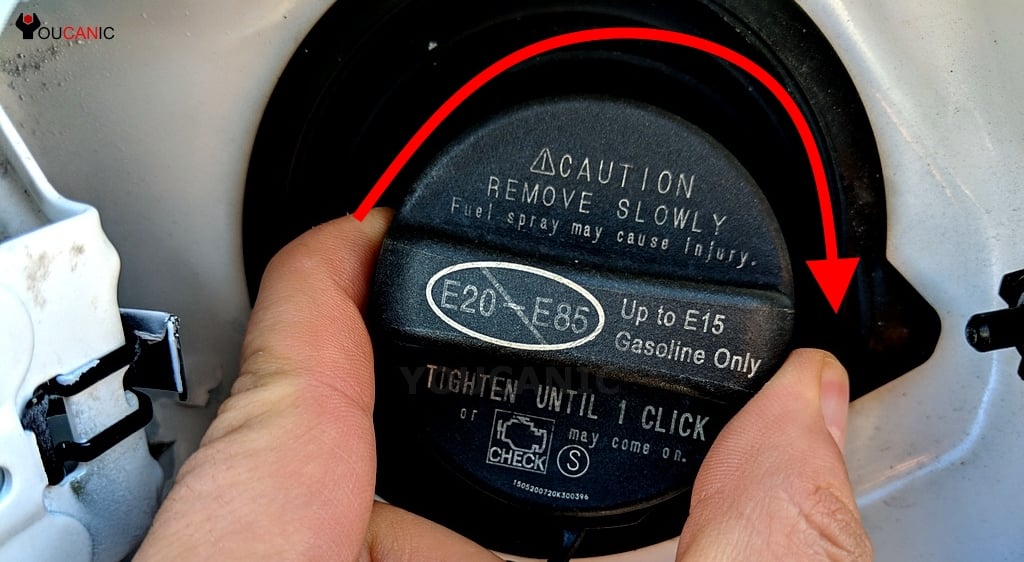

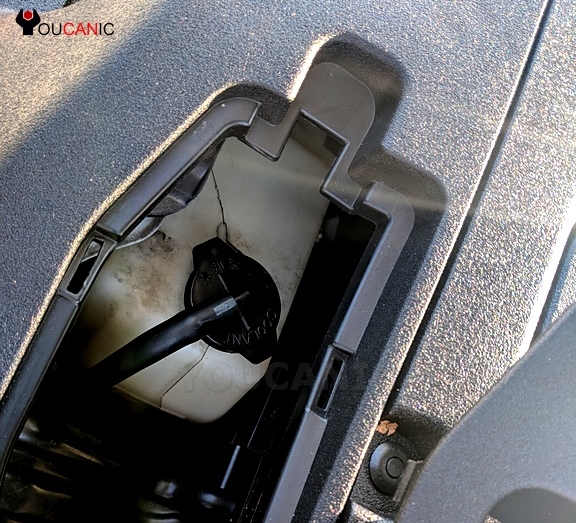
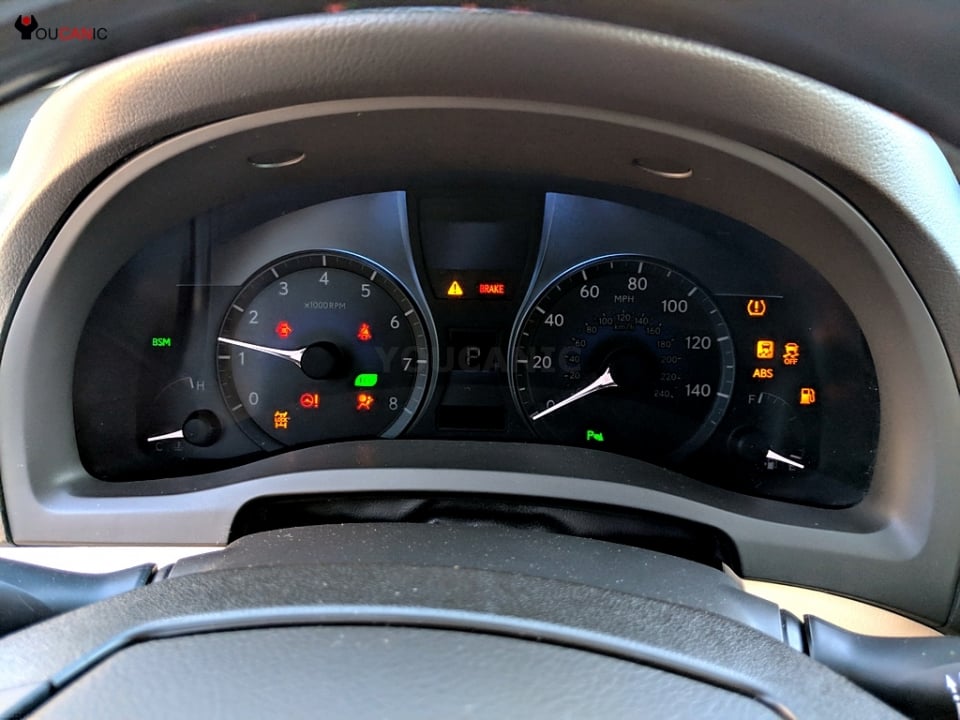
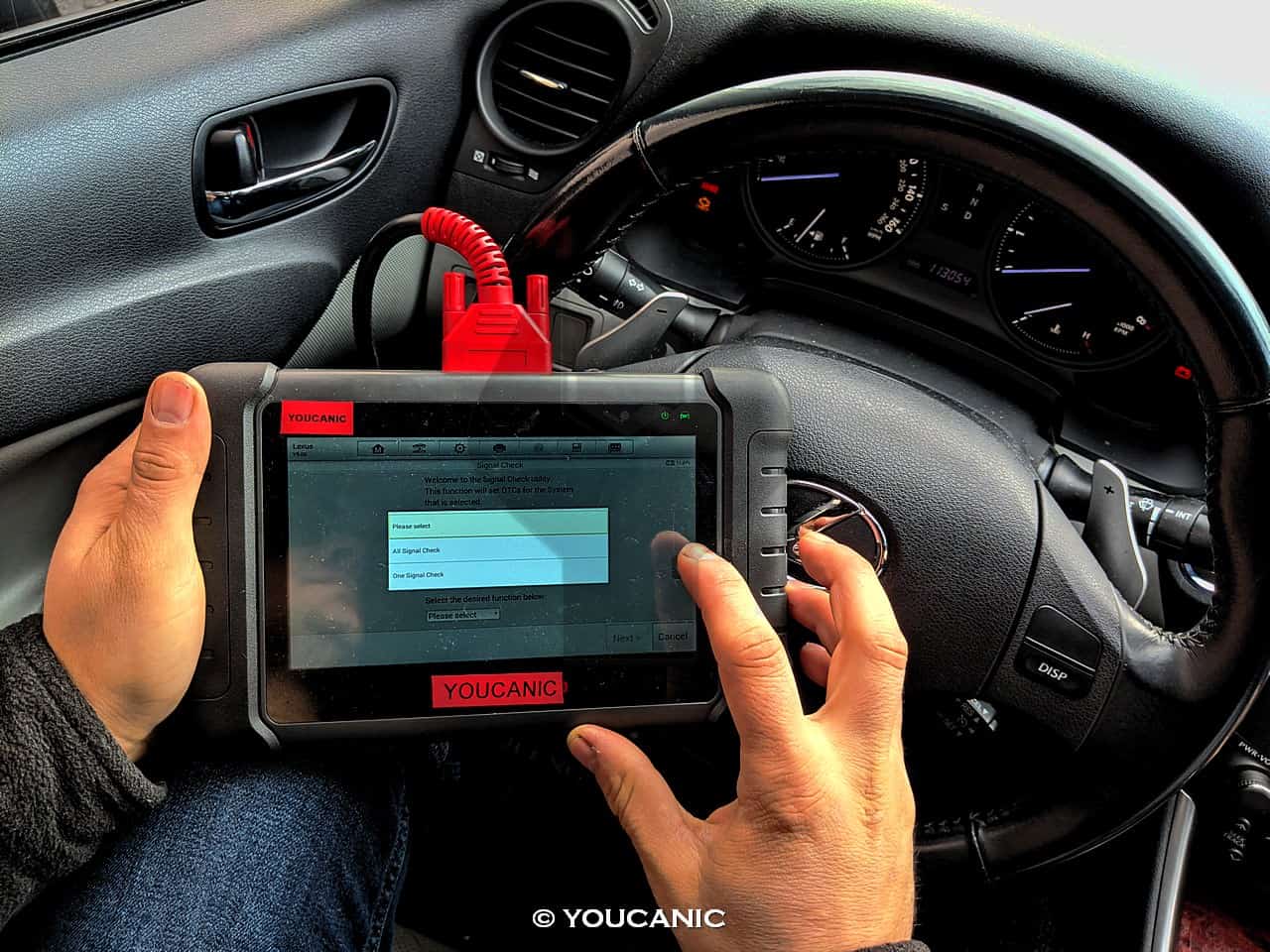
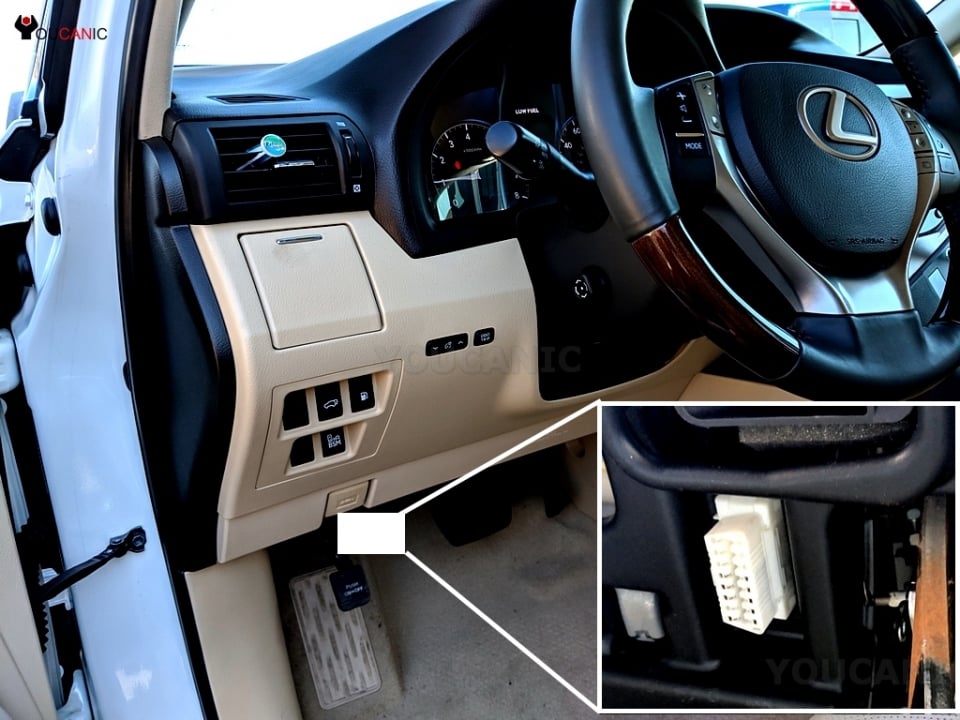





The article was great. Very informative. But the experience was ruined by the VVT video!! All videos need vocal instructions.